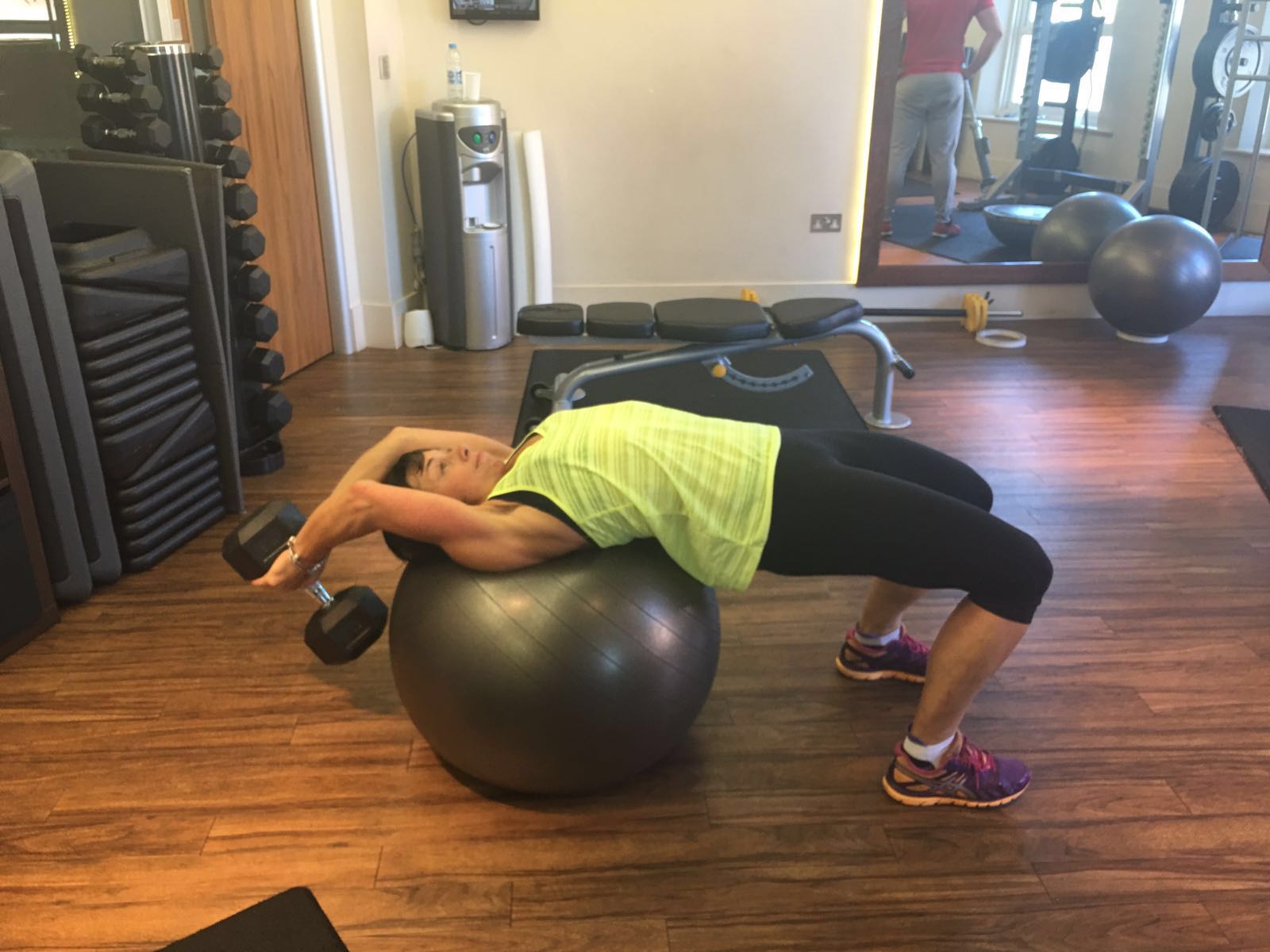The dumbbell pullover is an exercise that can train opposing muscle groups at once – specifically the pecs and lats.
- The pectoralis major in the front of the chest; controls pushing movements
- The latissimus dorsi, spanning both sides of the mid- to lower-back; powers pulling movements.
The dumbbell pullover exercise can use both muscle groups since it takes the shoulders through a huge range of motion. It can help increase chest, back, and serratus size and strength, at the same time.
The dumbbell pullover can also help to improve shoulder mobility in that it places a stretch upon the lats and triceps, the two muscle groups often responsible for impeded shoulder mobility overhead.
By strengthening the muscles of the serratus and back at deep ranges of shoulder flexion, you can work to establish greater stability and control which will enable your body to feel capable of achieving and supporting this deeper range of motion.
The dumbbell pullover exercise also builds core strength and stability. The glutes and core muscles must be firing to stabilise the spine and lock down the other joints of the body. As the dumbbell gets farther away from your body, your core must work harder to stabilise the spine.
How to do it
- Lie down on a bench (or a ball .. see later) with your head and upper body supported, and your feet planted on the floor.
- Hold a dumbbell in both hands above your chest. You should be holding the far end of the dumbbell in both palms, with your fingers and thumbs against the handle, and your arms extended.
- Keeping your core engaged, take the dumbbell slowly down behind your head. Keep a slight bend in your elbows throughout the movement and don’t arch your back.
- Take the weight down until it is about level with your head, then slowly bring it back up to the starting position. Don’t lower the weight so far that it feels uncomfortable, especially in your shoulders.
- Keep your low back in contact with the bench throughout the whole exercise. This requires high engagement of the core muscles, especially the deep-lying transverse abdominis. If your lower back arches up off the bench during the pullover, you’re likely not engaging the core as needed, or the weight might be too heavy for your core to stabilise it.
Dumbbell Pullover Variations
If you want to ramp up the challenge to your core, introduce some instability to your exercise.
Use a Gym Ball
Instead of lying on a solid weight bench, lean back on an inflatable gym ball. As you bring your arms behind your head to perform the pull-over, your core will have to work overtime to maintain good form and you help reinforce glute and core stabilization throughout the range of motion.
Dumbbell pull-over with raised legs
Lifting your legs and holding them just above the weight bench during the pull-over is another great way to increase the difficulty of the exercise and target your core muscles. Start with your legs raised and knees bent at 90°, then progress to extending your legs so they’re straight and hovering just above the bench. By lifting your legs off the ground you reduce your stability, so be careful of the weight pulling you back off the bench during your pull-overs.
Use a Kettlebell
I really like to use a KB for this exercise as I find it easier to hold in a balanced grip. Hold it around the ears with the weighted part going overhead.
Unsuitable for :
This exercise is not suitable during pregnancy or for those with a large diastasis (weakened linea alba causing a gap between the rectus abdominus muscle) due to the back ward stretch and the intra-abdominal pressure when bringing the arms back to above the chest.

Rachel Law is a personal fitness trainer based in New Malden, Surrey. Qualifications: ActivIQ Level 3 Personal Training; Burrell Education Pregnancy Exercise Prescription; Burrell Education Advanced Pregnancy Wellness Practitioner; Burrell Education Advanced Post Natal Exercise Prescription; Burrell Education 3rd Age Women Optimal Health and Nutrition; Burrell Education Peri Natal Athlete; Burrell Education Pelvic Flow and Freedom; Olympic Weight Lifting; Premier Global Kettlebells; FIE Level Assessment and Mentoring

